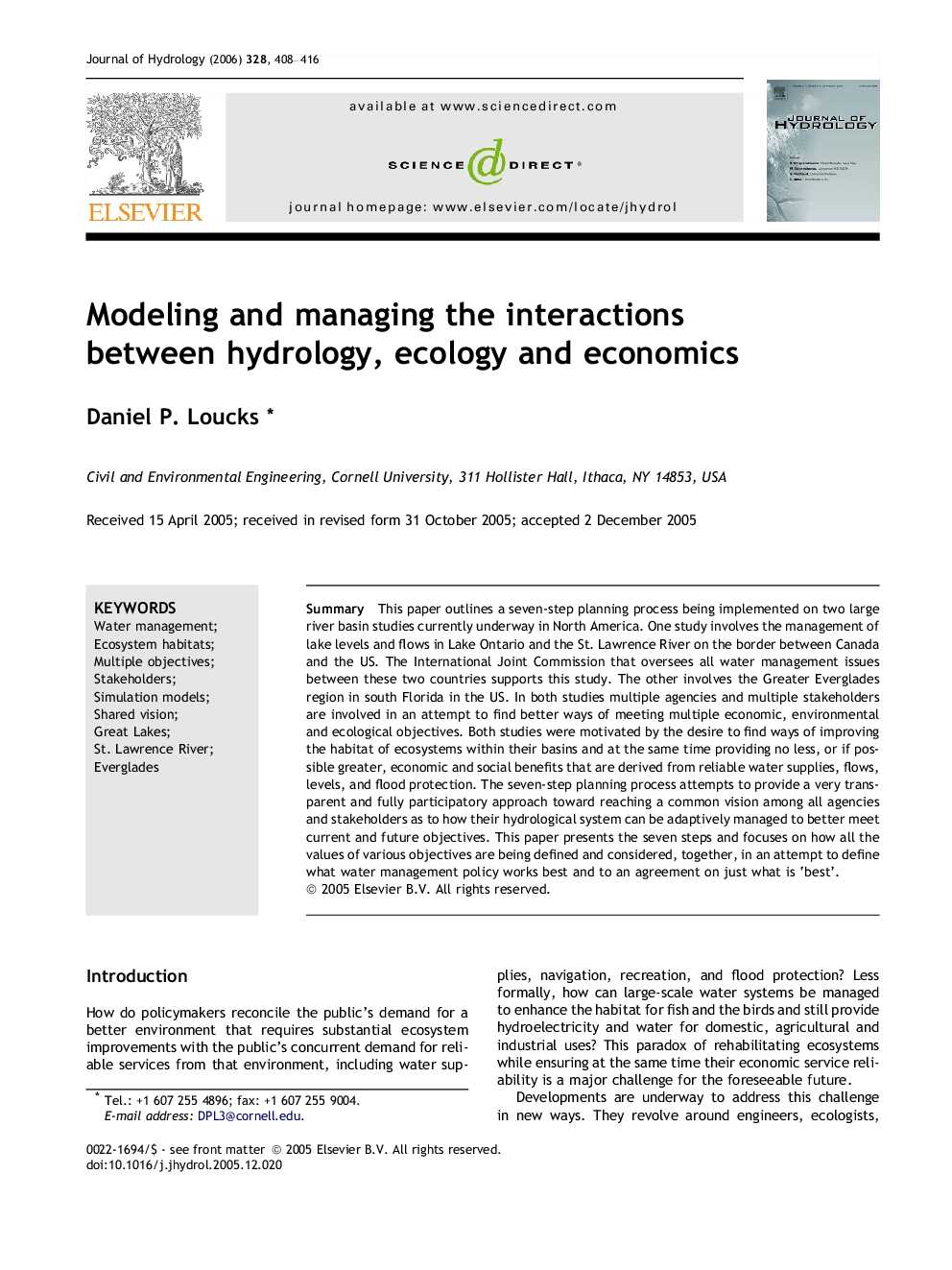| Article ID | Journal | Published Year | Pages | File Type |
|---|---|---|---|---|
| 4580580 | Journal of Hydrology | 2006 | 9 Pages |
SummaryThis paper outlines a seven-step planning process being implemented on two large river basin studies currently underway in North America. One study involves the management of lake levels and flows in Lake Ontario and the St. Lawrence River on the border between Canada and the US. The International Joint Commission that oversees all water management issues between these two countries supports this study. The other involves the Greater Everglades region in south Florida in the US. In both studies multiple agencies and multiple stakeholders are involved in an attempt to find better ways of meeting multiple economic, environmental and ecological objectives. Both studies were motivated by the desire to find ways of improving the habitat of ecosystems within their basins and at the same time providing no less, or if possible greater, economic and social benefits that are derived from reliable water supplies, flows, levels, and flood protection. The seven-step planning process attempts to provide a very transparent and fully participatory approach toward reaching a common vision among all agencies and stakeholders as to how their hydrological system can be adaptively managed to better meet current and future objectives. This paper presents the seven steps and focuses on how all the values of various objectives are being defined and considered, together, in an attempt to define what water management policy works best and to an agreement on just what is ‘best’.
